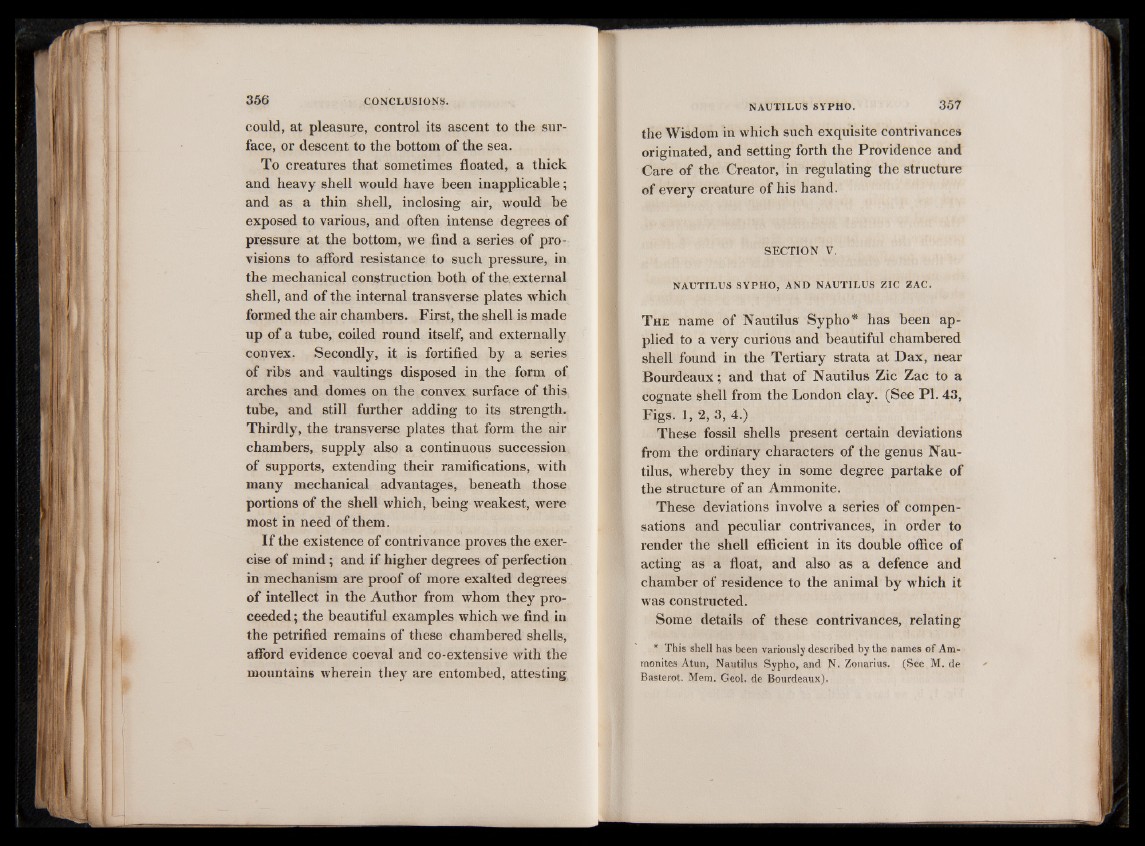
could, at pleasure, control its ascent to the surface,
or descent to the bottom of the sea.
To creatures that sometimes floated, a thick
and heavy shell would have been inapplicable;
and as a thin shell, inclosing air, would be
exposed to various, and often intense degrees of
pressure at the bottom, we find a series of provisions
to afford resistance to such pressure, in
the mechanical construction both of the external
shell, and of the internal transverse plates which
formed the air chambers. First, the shell is made
up of a tube, coiled round itself, and externally
convex. Secondly, it is fortified by a series
of ribs and vaultings disposed in the form of
arches and domes on the convex surface of this
tube, and still further adding to its strength.
Thirdly, the transverse plates that form the air
chambers, supply also a continuous succession
of supports, extending their ramifications, with
many mechanical advantages, beneath those
portions of the shell which, being weakest, were
most in need of them.
I f the existence of contrivance proves the exercise
of mind; and if higher degrees of perfection
in mechanism are proof of more exalted degrees
of intellect in the Author from whom they proceeded
; the beautiful examples which we find in
the petrified remains of these chambered shells,
afford evidence coeval and co-extensive with the
mountains wherein they are entombed, attesting
the Wisdom in which such exquisite contrivances
originated, and setting forth the Providence and
Care of the Creator, in regulating the structure
of every creature of his hand.
SECTION V.
NAUTILUS SYPHO, A ND NAUTILUS ZIC ZAC.
T he name of Nautilus Sypho* has been applied
to a very curious and beautiful chambered
shell found in the Tertiary strata at Dax, near
Bourdeaux; and that of Nautilus Zic Zac to a
cognate shell from the London clay. (See PI. 43,
Figs. 1, 2, 3, 4.)
These fossil shells present certain deviations
from the ordinary characters of the genus Nautilus,
whereby they in some degree partake of
the structure of an Ammonite.
These deviations involve a series of compensations
and peculiar contrivances, in order to
render the shell efficient in its double office of
acting as a float, and also as a defence and
chamber of residence to the animal by which it
was constructed.
Some details of these contrivances, relating
* This shell has been variously described by the names of Ammonites
Atun, Nautilus Sypho, and N. Zonarius. (See M. de
Basterot. Mem. Geol. de Bourdeaux).